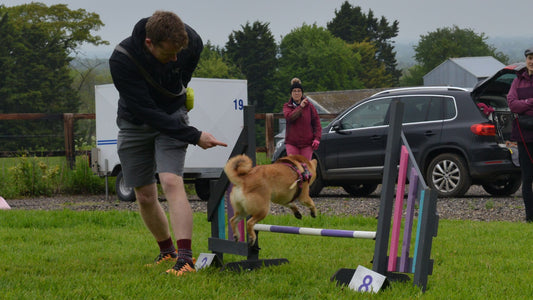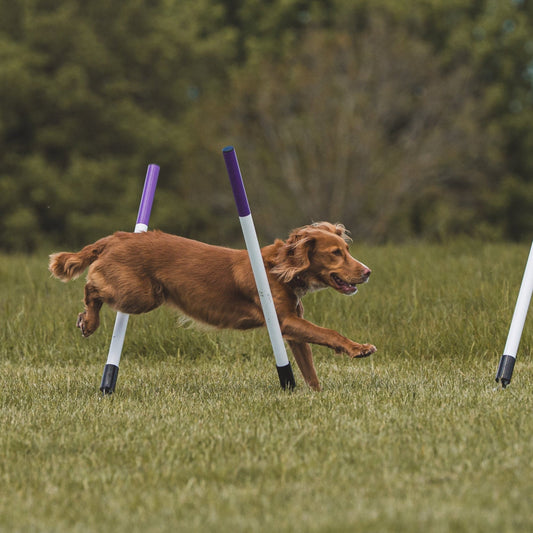What we do in the first week of the beginners course
In week 1 we kick off by introducing some of the key equipment and commands by running some straight runs over jumps and tunnels.
Plus, obedience using Place Boards for your sit-stays to get a valuable head start at the start line!
The owners of the fun-loving and energetic dogs that join us know that their dogs love to be active and jump. BUT because success in agility is all about running a ‘clear round’ AND courses can be made up of 14 to 20 obstacles, this first lesson plan is designed to give you guys some foundational brakes and steering you will need to guide those dogs around a course.
By designing the course syllabus to start with straight lines, not only do you teach the dog’s to be confident approaching the key equipment, but your dogs also learn the default is to take an obstacle if it’s in front of them and not go around (or under if it’s a jump!).
This builds independence, gains you time, and saves you breath as you only have to give verbal cues for the steering and equipment!
How week 1’s session works:
With 2 jump wings 5-10 paces apart, poles start on the ground so the dog can get a successful rehearsal of running a straight line.
Wing 2 is the first we raise into a jump, so that the dog can get a run up, followed by wing 1 so your dog is now jumping two hurdles.
Being slowly raised avoids your dog ducking under, learning to dodge jumps and going the long way around plus slowly condition muscles.
Saying “go” as you release the dog down the line teaches them that when they hear you say that it is a cue for them to run straight.
A valuable cue to learn to get them over the finish line of an agility course as they often end with a straight sprint!

I will concertina the tunnel making it shorter to build confidence and extend it progressively with each success.
Even if your dog is happy running it, these stages are deliberately layered progressively to get the foundations right.
We want your dog to learn a word that means go to the entrance and through, so ultimately they will do it on cue.
Saying “tunnel” as you release them through, teaches them this.
With a ratio of 5 dogs to 1 trainer attendees are given plenty of runs and advice plus being given obedience exercise when I introduce training Platforms, called Place Boards using our signature T.A.R.G.E.T method to practice while you wait.
Woodford’s Mum described it as running like clockwork when she left this lovely review

This is him in action 👇

How to practice dog agility at home:
While not everyone has a agility setup at home, there are certainly elements that can be practiced at home:
Firstly, because in agility we run on the dogs left and right, this week on their walks, have them on both sides. I find the easiest way to do this naturally is to always walk my dog on the inside, away from the traffic and as I cross a road, pop them on the other side.
The T.A.R.G.E.T steps you have been introduced to don’t have to just be repeated on a Place Board, it is effective to use a mat instead.
To add “go” practice to your T.A.R.G.E.T work, you can walk out, put a bowl down 5 paces in front of your dog, return to their side, say “go”
This drill reinforces that when they hear go, they run out straight from your side


